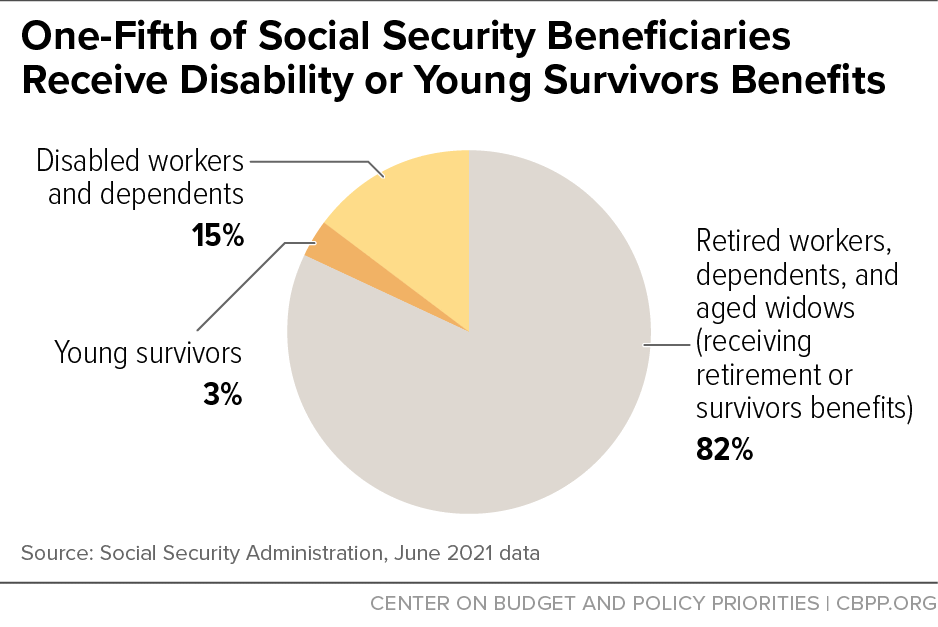
There are many ways to fix the current Social Security problems. It is important that workers are taxed at a higher rate. This would solve the problem up to 2095. Another suggestion is to abolish the tax base on taxable wages and allow all wages be taxed. By raising the retirement age to 66, the deficit would be closed by one-seventh of the original amount. There are many other solutions, but these three are worth considering.
Ratio worker-beneficiary of 2.6
The Social Security system is facing serious problems. To remain solvent, it needs a worker-beneficiary rate of 2.8. However, it is currently falling below that level. This ratio is projected to drop to two-and-a-half by 2060, and an effective reform agenda must reverse this downward trend. While immigration can reverse this trend there are other solutions.

Increase in payroll taxes
Many believe that increasing the payroll tax would solve the Social Security crisis. However, this is flawed. The decline in payroll tax revenue since 1983 has been significant, but a lot of it is due to rising inequality and the rise of fringe benefits. But despite the recent financial crisis, many Americans still support Social Security and oppose any cuts. The overwhelming majority of American adults support raising the payroll tax rate to strengthen the system.
Modification in the calculation of the consumer price index
Many Americans believe that changing consumer price index formula is the way out of the Social Security crisis. However there are many solutions. Many economists think that the current formula for the COLA is flawed. There have been many proposals for reducing the COLA each and every year. We will discuss these changes and all their ramifications.
Changes in retirement age
One solution to the current crisis in social security is possible: a change of the retirement age. New research suggests that the retirement age be increased from 65 to 67, with the maximum age being reached in 22 years. This change would affect only younger people and would be in effect for 22 years. This solution may be less drastic than returning 65 years old as the original retirement age. However, it may not work well for everyone. This proposal could result in more people delaying their benefits or claiming disability benefits later in life, which would place strains on the Social Security system. This change could increase the number of early claimants. These low-wage workers are at risk.

Cost of the plan
As wages rise, the long-term cost for Social Security will likely fall. Many reform proposals assume CPI overstates the cost of living. This assumption is based on insufficient evidence. Many reform plans propose reducing the cost-of living adjustment for Social Security benefits every year. In the long-term, benefits will be more than 0.28% below payroll.
FAQ
Why it is important that you manage your wealth
Financial freedom starts with taking control of your money. Understanding your money's worth, its cost, and where it goes is the first step to financial freedom.
It is also important to determine if you are adequately saving for retirement, paying off your debts, or building an emergency fund.
If you fail to do so, you could spend all your savings on unexpected costs like medical bills or car repairs.
Which are the best strategies for building wealth?
Your most important task is to create an environment in which you can succeed. You don’t want to have the responsibility of going out and finding the money. You'll be spending your time looking for ways of making money and not creating wealth if you're not careful.
Additionally, it is important not to get into debt. While it's tempting to borrow money to make ends meet, you need to repay the debt as soon as you can.
You set yourself up for failure by not having enough money to cover your living costs. When you fail, you'll have nothing left over for retirement.
It is important to have enough money for your daily living expenses before you start saving.
What is risk management and investment management?
Risk management is the act of assessing and mitigating potential losses. It involves monitoring, analyzing, and controlling the risks.
Risk management is an integral part of any investment strategy. The objective of risk management is to reduce the probability of loss and maximize the expected return on investments.
These are the key components of risk management
-
Identifying the source of risk
-
Monitoring and measuring the risk
-
Controlling the Risk
-
How to manage risk
What are the benefits associated with wealth management?
Wealth management's main benefit is the ability to have financial services available at any time. Savings for the future don't have a time limit. You can also save money for the future by doing this.
You can choose to invest your savings in different ways to get the most out of your money.
To earn interest, you can invest your money in shares or bonds. You can also purchase property to increase your income.
If you use a wealth manger, someone else will look after your money. You won't need to worry about making sure your investments are safe.
Who Should Use a Wealth Manager?
Anyone who wants to build their wealth needs to understand the risks involved.
It is possible that people who are unfamiliar with investing may not fully understand the concept risk. As such, they could lose money due to poor investment choices.
People who are already wealthy can feel the same. It's possible for them to feel that they have enough money to last a lifetime. They could end up losing everything if they don't pay attention.
As such, everyone needs to consider their own personal circumstances when deciding whether to use a wealth manager or not.
Statistics
- If you are working with a private firm owned by an advisor, any advisory fees (generally around 1%) would go to the advisor. (nerdwallet.com)
- These rates generally reside somewhere around 1% of AUM annually, though rates usually drop as you invest more with the firm. (yahoo.com)
- As previously mentioned, according to a 2017 study, stocks were found to be a highly successful investment, with the rate of return averaging around seven percent. (fortunebuilders.com)
- A recent survey of financial advisors finds the median advisory fee (up to $1 million AUM) is just around 1%.1 (investopedia.com)
External Links
How To
How to invest your savings to make money
You can make a profit by investing your savings in various investments, including stock market, mutual funds bonds, bonds and real estate. This is called investing. You should understand that investing does NOT guarantee a profit, but increases your chances to earn profits. There are many different ways to invest savings. Some of them include buying stocks, Mutual Funds, Gold, Commodities, Real Estate, Bonds, Stocks, and ETFs (Exchange Traded Funds). These methods are discussed below:
Stock Market
The stock market allows you to buy shares from companies whose products and/or services you would not otherwise purchase. This is one of most popular ways to save money. Buying stocks also offers diversification which helps protect against financial loss. You can, for instance, sell shares in an oil company to buy shares in one that makes other products.
Mutual Fund
A mutual funds is a fund that combines money from several individuals or institutions and invests in securities. They are professionally managed pools, which can be either equity, hybrid, or debt. The investment objectives of mutual funds are usually set by their board of Directors.
Gold
Long-term gold preservation has been documented. Gold can also be considered a safe refuge during economic uncertainty. It is also used in certain countries to make currency. Due to investors looking for protection from inflation, gold prices have increased significantly in recent years. The supply and demand factors determine how much gold is worth.
Real Estate
Real estate is land and buildings. You own all rights and property when you purchase real estate. To generate additional income, you may rent out a part of your house. You can use your home as collateral for loan applications. The home may also be used to obtain tax benefits. You must take into account the following factors when buying any type of real property: condition, age and size.
Commodity
Commodities include raw materials like grains, metals, and agricultural commodities. These items are more valuable than ever so commodity-related investments are a good idea. Investors who want the opportunity to profit from this trend should learn how to analyze charts, graphs, identify trends, determine the best entry points for their portfolios, and to interpret charts and graphs.
Bonds
BONDS are loans between governments and corporations. A bond is a loan agreement where the principal will be repaid by one party in return for interest payments. When interest rates drop, bond prices rise and vice versa. An investor purchases a bond to earn income while the borrower pays back the principal.
Stocks
STOCKS INVOLVE SHARES of ownership within a corporation. A share represents a fractional ownership of a business. You are a shareholder if you own 100 shares in XYZ Corp. and have the right to vote on any matters affecting the company. You also receive dividends when the company earns profits. Dividends are cash distributions to shareholders.
ETFs
An Exchange Traded Fund is a security that tracks an indice of stocks, bonds or currencies. ETFs can trade on public exchanges just like stock, unlike traditional mutual funds. The iShares Core S&P 500 (NYSEARCA - SPY) ETF is designed to track performance of Standard & Poor’s 500 Index. This means that if SPY is purchased, your portfolio will reflect the S&P 500 performance.
Venture Capital
Ventures capital is private funding venture capitalists provide to help entrepreneurs start new businesses. Venture capitalists provide financing to startups with little or no revenue and a high risk of failure. Usually, they invest in early-stage companies, such as those just starting out.